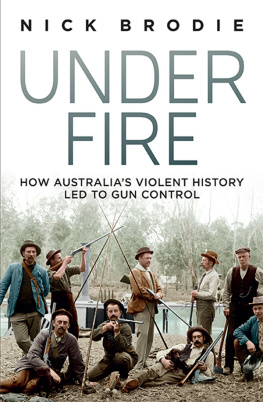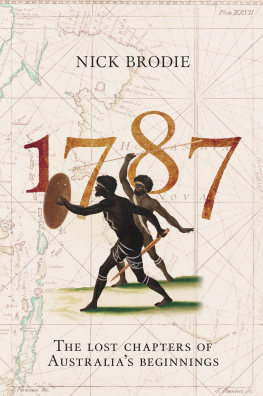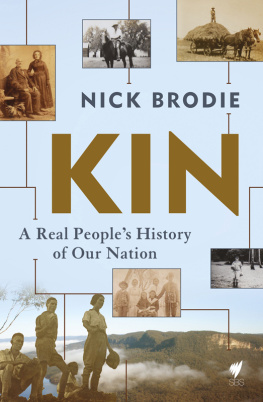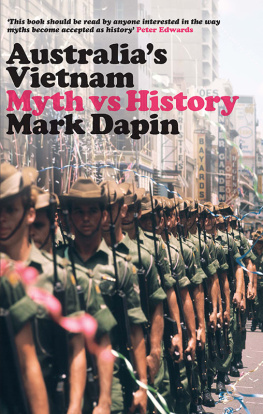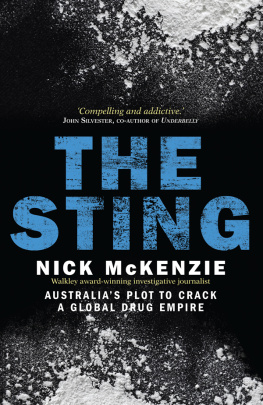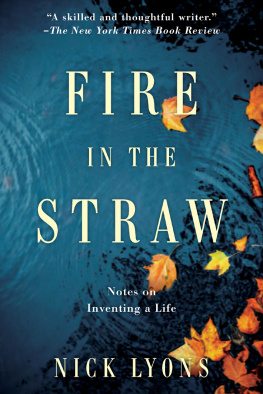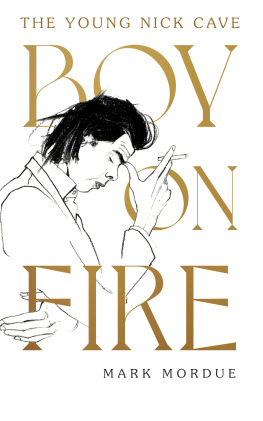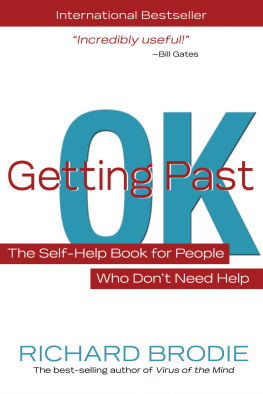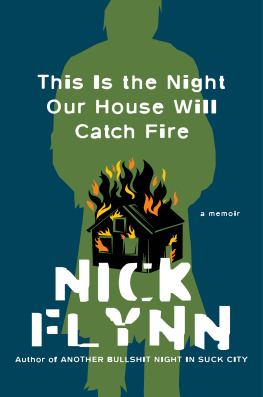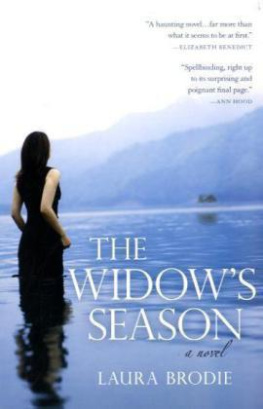Nick Brodie - Under Fire: How Australias violent history led to gun control
Here you can read online Nick Brodie - Under Fire: How Australias violent history led to gun control full text of the book (entire story) in english for free. Download pdf and epub, get meaning, cover and reviews about this ebook. year: 2020, publisher: Hardie Grant Publishing, genre: Politics. Description of the work, (preface) as well as reviews are available. Best literature library LitArk.com created for fans of good reading and offers a wide selection of genres:
Romance novel
Science fiction
Adventure
Detective
Science
History
Home and family
Prose
Art
Politics
Computer
Non-fiction
Religion
Business
Children
Humor
Choose a favorite category and find really read worthwhile books. Enjoy immersion in the world of imagination, feel the emotions of the characters or learn something new for yourself, make an fascinating discovery.
- Book:Under Fire: How Australias violent history led to gun control
- Author:
- Publisher:Hardie Grant Publishing
- Genre:
- Year:2020
- Rating:3 / 5
- Favourites:Add to favourites
- Your mark:
- 60
- 1
- 2
- 3
- 4
- 5
Under Fire: How Australias violent history led to gun control: summary, description and annotation
We offer to read an annotation, description, summary or preface (depends on what the author of the book "Under Fire: How Australias violent history led to gun control" wrote himself). If you haven't found the necessary information about the book — write in the comments, we will try to find it.
Under Fire: How Australias violent history led to gun control — read online for free the complete book (whole text) full work
Below is the text of the book, divided by pages. System saving the place of the last page read, allows you to conveniently read the book "Under Fire: How Australias violent history led to gun control" online for free, without having to search again every time where you left off. Put a bookmark, and you can go to the page where you finished reading at any time.
Font size:
Interval:
Bookmark:


Gunfire introduced British law to Australia. In 1770, at Botany Bay on Australias eastern coast, Captain James Cooks landing party fired at two men on the shore. They were standing in defiance of the interlopers.
Guns have been part of Australias story for a long time. Dutch and Spanish expeditions in Australias north brought gunfire with them in 1606. So too did the great English adventurer William Dampier in Australias west in 1688.
But Cooks shooting was different, for it presaged a new phase in Australias history. We might term it the age of the firearm.
Gunfire was part and parcel of the growth of Europes empires, and Britain was no exception. A few months following the shooting at Botany Bay, and after several violent encounters with Indigenous peoples, Cook ordered a volley be fired to accompany his ceremonial claiming of Australia for Britain at what he pointedly named Possession Island. Gunfire was a sort of punctuation mark to this formal act of colonisation. And this pattern of celebratory shooting was replicated with another volley of musketry, which accompanied the establishment of a permanent British settlement at Sydney in 1788.
The age of the firearm thus paralleled and helped drive the story of Britains empire. But it is also a critical part of modern Australias national story, perhaps even its defining one.
Gunfire marks many of Australias most significant moments. Wars were won by the gun, bushrangers and rebels took up the gun, hunters acquired sustenance and sport by the gun. In one sense, this book is a history of Australia, measured by the gun.
But because Australia evolved with the firearm, this history reveals something essential about a nation which was repeatedly threatened by the very thing which did so much to establish it. This history is therefore not just about guns, but about how they came to be controlled. This is the story of a social consensus emerging over centuries that the right to life is the highest liberty.
Expressed in generations of laws and attitudes and arguments about gun-control, this is the long lesson, which we learned the hard way. This is the story of the rise and fall of the age of the firearm.
Who can use guns? What can they use them for, and where and when? Are some guns so dangerous they are incompatible with civil society? These are the questions Australians have often asked, and this is a record of the answers they gave.
This is the tale of why and how guns were banned from our city streets, shooters came to need licences, guns had to be registered, specific weapons came to be prohibited, and so on. This is an intergenerational story about protecting children from unnecessary danger. This is the history of a creeping battle against corporate interests and foreign political ideologies.
This is historys rebuttal to the senator who in 2016 characterised Australias National Firearms Agreement as just an emotional reaction to a tragedy.
This is a reminder for all Australians that our biggest fight for freedom was not against Turkey or Germany or Japan, but against our own long love affair with the gun.

Australia inherited Englands 1689 Bill of Rights when British law was transported to Australia with a fleet of soldiers and convicts. Then, rather like the even older Magna Carta, the Bill of Rights provisions about parliamentary governance, juries and petitions guided the development of Australian law from colonial to modern times. But its section on arms has little relevance in the big scheme of things here. A product of the crisis-ridden seventeenth century where Europes political and religious disputes frequently turned violent the Bill of Rights provided That the Subjects which are Protestants may have Arms for their Defence suitable to Conditions and as allowed by Law.Protestants, not Catholics. They were nominally for defence, not offence. And they had to be legal, giving the state responsibility for deciding who could have what. The Bill of Rights was, after all, partly designed to bolster a not-so-peaceful change in government following William of Oranges invasion of England. Such provisions authorised the arming of supporters and the disarming of former enemies. It was all about teams, not individuals.
A century later, when the British began colonising Australia, the exact provisions of the Bill of Rights were not terribly important. Facts on the ground were more important than abstract concerns about whether non-Protestants could or should have guns. Yet in their pragmatic approach to the issue the invaders paralleled the original thinking that lay behind this part of the Bill of Rights. Colonial authorities were keen to keep their loyal subjects armed, remained wary about arming convicts and servile classes, and sought to maintain a clear military superiority over the Indigenous population they were dispossessing through the strategic control and deployment of firearms.
Illustrating this were the guns sent with the colonists. King George III granted Governor Arthur Phillip full power and authority to build fortifications upon his arrival in New South Wales in 1788 and to stock them with ordinances and ammunition and all sorts of arms fit and necessary for the security and defence of the same.
Bearing firearms for the purpose of collective defence was critical in a colonial setting. Security concerns rather than philosophical ideas most help explain amendments to the Constitution of the United States of America around this same time. The famous 1791 second amendment provided that the right of the people to keep and bear arms, shall not be infringed in order to enable local militia to function.
Such use of firearms for self-defence was exemplified on Norfolk Island, Australias secondary colonial outpost in the Pacific Ocean, when Lieutenant Governor Philip Gidley King gave weapons to settlers who complained of being frequently robbed by the run-away convicts.
But the more guns that entered the colony for its defence, the more guns became an offensive problem, and 1796 marked a major turning point.
Hunter bemoaned that the arms which had formerly been sent out had been issued to different people long before my arrival, and I fear that many of them have fallen into the hands of worthless characters.
With guns becoming increasingly problematic on a range of fronts, in 1796 Hunter ordered the registration of all firearms and the certification of all who possessed them. It was perhaps the closest thing to Australias first comprehensive gun regulation:
All settlers and other persons (the civil and military officers excepted) who are in possession of firearms are hereby ordered forthwith to give in their names to the Commissary, or storekeepers at the different settlements, in order to their being registered; and the constables of the different districts are to apprehend all persons they may meet carrying arms without a certificate signed by the Commissary, of such arms having been registered in his office.
The governor wanted to know where the guns were, and who was allowed to have them.
But while a significant early moment in the story of gun control within Australia, this is more for what it signified than for what it effected. After all, with endemic warfare against Aboriginal people, Hunters main concern was to ensure the
But even in his measures to protect the colony, Hunter revealed how gun control could be part of robust security measures. The arrival of large numbers of Irish convicts especially those transported for political offences against British occupation of that island prompted fears of a local rebellion. This, more than any external threats, prompted Hunter to order the formation of a volunteer corps of fifty men capable of bearing arms. In other words, the colonial government wanted to control access to guns as much as possible.
Next pageFont size:
Interval:
Bookmark:
Similar books «Under Fire: How Australias violent history led to gun control»
Look at similar books to Under Fire: How Australias violent history led to gun control. We have selected literature similar in name and meaning in the hope of providing readers with more options to find new, interesting, not yet read works.
Discussion, reviews of the book Under Fire: How Australias violent history led to gun control and just readers' own opinions. Leave your comments, write what you think about the work, its meaning or the main characters. Specify what exactly you liked and what you didn't like, and why you think so.

